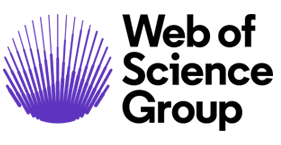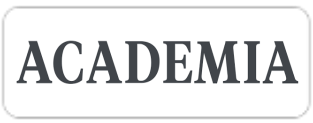Dam-Break Energy of Porous Structure for Scour Countermeasure at Bridge Abutment
Downloads
Doi:10.28991/CEJ-2022-08-12-019
Full Text:PDF
Downloads
[2] Llewellyn, R. J., Yick, S. K., & Dolman, K. F. (2004). Scouring erosion resistance of metallic materials used in slurry pump service. Wear, 256(6), 592–599. doi:10.1016/j.wear.2003.10.002.
[3] Fan, Z., Zhang, B., Liu, Y., Suo, T., Xu, P., & Zhang, J. (2021). Interpenetrating phase composite foam based on porous aluminum skeleton for high energy absorption. Polymer Testing, 93, 106917. doi:10.1016/j.polymertesting.2020.106917.
[4] Rinaldi, B. Y. (2001). Physical Model of Scour Control around Bridge Abutments. Forum Teknik Sipil, X, 139–149. (In Indonesian).
[5] Shahsavari, H., Heidarpour, M., & Mohammadalizadeh, M. (2017). Simultaneous effect of collar and roughness on reducing and controlling the local scour around bridge abutment. Acta Universitatis Agriculturae et Silviculturae Mendelianae Brunensis, 65(2), 491–499. doi:10.11118/actaun201765020491.
[6] Abdurrosyid, J., & Fatchan, A. K. (2007). Scour Around the Abutments and Its Control in Existing Transport Conditions for Multiple Channels. Dinamika Teknik Sipil, 7(1), 20–29. (In Indonesian).
[7] Mackay, E., Shi, W., Qiao, D., Gabl, R., Davey, T., Ning, D., & Johanning, L. (2021). Numerical and experimental modelling of wave interaction with fixed and floating porous cylinders. Ocean Engineering, 242, 110118. doi:10.1016/j.oceaneng.2021.110118.
[8] Mackay, E., Liang, H., & Johanning, L. (2021). A BEM model for wave forces on structures with thin porous elements. Journal of Fluids and Structures, 102, 103246. doi:10.1016/j.jfluidstructs.2021.103246.
[9] Krishnendu, P., & Balaji, R. (2020). Hydrodynamic performance analysis of an integrated wave energy absorption system. Ocean Engineering, 195, 106499. doi:10.1016/j.oceaneng.2019.106499.
[10] Amir, M. U. A. R., Hashmi, H. N., Baloch, M., Ehsan, M. A., Muhammad, U., & Ali, Z. (2018). Experimental investigation of channel bank vegetation on scouring characteristics around a wing wall abutment. Technical Journal, 23(01), 15-21.
[11] Zhao, E., Dong, Y., Tang, Y., & Sun, J. (2021). Numerical investigation of hydrodynamic characteristics and local scour mechanism around submarine pipelines under joint effect of solitary waves and currents. Ocean Engineering, 222, 108553. doi:10.1016/j.oceaneng.2020.108553.
[12] Pu, J. H., Hussain, A., Guo, Y. kun, Vardakastanis, N., Hanmaiahgari, P. R., & Lam, D. (2019). Submerged flexible vegetation impact on open channel flow velocity distribution: An analytical modelling study on drag and friction. Water Science and Engineering, 12(2), 121–128. doi:10.1016/j.wse.2019.06.003.
[13] Radice, A., & Davari, V. (2014). Roughening Elements as Abutment Scour Countermeasures. Journal of Hydraulic Engineering, 140(8), 6014014. doi:10.1061/(asce)hy.1943-7900.0000892.
[14] Juez, C., & Navas-Montilla, A. (2022). Numerical characterization of seiche waves energy potential in river bank lateral embayments. Renewable Energy, 186, 143–156. doi:10.1016/j.renene.2021.12.125.
[15] Wilson, R. I., Friedrich, H., & Stevens, C. (2018). Flow structure of unconfined turbidity currents interacting with an obstacle. Environmental Fluid Mechanics, 18(6), 1571–1594. doi:10.1007/s10652-018-9631-7.
[16] Oehy, C. D., & Schleiss, A. J. (2007). Control of turbidity currents in reservoirs by solid and permeable obstacles. Journal of Hydraulic Engineering, 133(6), 637-648. doi:10.1061/(ASCE)0733-9429(2007)133:6(637).
[17] Hassan, Z. F., Karim, I. R., & Al-Shukur, A. H. K. (2020). Effect of interaction between bridge piers on local scouring in cohesive soils. Civil Engineering Journal (Iran), 6(4), 659–669. doi:10.28991/cej-2020-03091498.
[18] Li, H., Barkdoll, B., & Kuhnle, R. (2005). Bridge Abutment Collar as a Scour Countermeasure. Impacts of Global Climate Change. doi:10.1061/40792(173)395.
[19] Ansari, S. A., Kothyari, U. C., & Ranga Raju, K. G. (2002). Influence of cohesion on scour around bridge piers. Journal of Hydraulic Research, 40(6), 717–729. doi:10.1080/00221680209499918.
[20] Igarashi, T. (1981). Characteristics of the Flow Around Two Circular Cylinders Arranged in Tandem - 1. Bulletin of the JSME, 24(188), 323–331. doi:10.1299/jsme1958.24.323.
[21] Gao, Yangyang, Stephane Etienne, Xikun Wang, and Soon Keat Tan. "Experimental Study on the Flow around Two Tandem Cylinders with Unequal Diameters.” Journal of Ocean University of China 13, no. 5 (July 9, 2014): 761–770. doi:10.1007/s11802-014-2377-z.
[22] Tafarojnoruz, Ali, Roberto Gaudio, and Francesco Calomino. "Bridge Pier Scour Mitigation under Steady and Unsteady Flow Conditions.” Acta Geophysica 60, no. 4 (April 28, 2012): 1076–1097. doi:10.2478/s11600-012-0040-x.
[23] Briaud, Jean-Louis. "Scour Depth at Bridges: Method Including Soil Properties. I: Maximum Scour Depth Prediction.” Journal of Geotechnical and Geoenvironmental Engineering 141, no. 2 (February 2015): 04014104. doi:10.1061/(asce)gt.1943-5606.0001222.
[24] Yaghoubi, S., Afshin, H., Firoozabadi, B., & Farizan, A. (2017). Experimental Investigation of the Effect of Inlet Concentration on the Behavior of Turbidity Currents in the Presence of Two Consecutive Obstacles. Journal of Waterway, Port, Coastal, and Ocean Engineering, 143(2). doi:10.1061/(asce)ww.1943-5460.0000358.
[25] Kordnaeij, M., Asghari Pari, S. A., Sajjadi, S. M., & Shafai Bajestan, M. (2017). Experimentally Comparisons of the Effect of Porous Sheets and Porous Obstacles in Controlling Turbidity Current. Water and Soil Science, 27(1), 43-54.
[26] Meiburg, E., & Kneller, B. (2010). Turbidity Currents and Their Deposits. Annual Review of Fluid Mechanics, 42(1), 135–156. doi:10.1146/annurev-fluid-121108-145618.
[27] Asghari Pari, S. A., Kashefipour, S. M., & Ghomeshi, M. (2017). An experimental study to determine the obstacle height required for the control of subcritical and supercritical gravity currents. European Journal of Environmental and Civil Engineering, 21(9), 1080–1092. doi:10.1080/19648189.2016.1144537.
- Authors retain all copyrights. It is noticeable that authors will not be forced to sign any copyright transfer agreements.
- This work (including HTML and PDF Files) is licensed under a Creative Commons Attribution 4.0 International License.![]()














